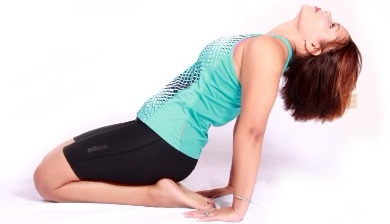How to Exercise With Rheumatoid Arthritis
Published Apr 25, 2018

Exercise can help manage pain, but people with rheumatoid arthritis need to exercise caution as well. Try these RA-friendly workout tips.
When you have rheumatoid arthritis (RA), skipping out on regular exercise and stretching can cause your joints to become so tight and stiff that they can't move or bend. With exercise, you can better maintain range of motion and improve symptoms like joint pain, says James R. O'Dell, MD, a professor, chief of therheumatology and immunology division, and vice chairman of the internal medicine departmentat the University of Nebraska Medical Center in Omaha.
However, 71 percent of people with RA don't exercise regularly, even though it offers many benefits, researchers noted in a study published in the July 2015 issue of Sports Medicine. The barriers to exercise, such as fatigue and pain, are the same for people with RA who do exercise and those who don't, but those who exercise are better able to overcome them, the researchers note.

Getting Started With an RA Exercise Plan
"Patients with RA can and should exercise regularly, period," says Elaine Husni, MD, MPH, vice chair of rheumatology and director of the Arthritis and Musculoskeletal Center of Cleveland Clinic in Ohio and an assistant professor at the Lerner College of Medicine of Case Western Reserve University. "However, there may be modifications needed, depending on your level of fitness and ability."
For starters, always warm up before exercising and cool down afterward, Dr. Husni suggests. Also, be sure to use pain as your guide to know when to modify or stop. "Exercise should not be painful, so the onset of pain tells you to slow down or modify your exercise," she explains.
The goal is to keep moving and do so at your level of fitness to prevent injuries, Husni says. "If you are new to exercise, you may benefit from group classes or a trainer so someone with experience can watch and teach you how to exercise safely."
It’s important to incorporate exercise into your routine as soon as you’re diagnosed with RA. The best strategy is to consult with a physical therapist specifically trained to work with people with inflammatory conditions — you’ll benefit by working with an expert that’s familiar with the needs of people with RA.
A physical therapist can map out a customized routine for you so that you know which exercises you can do and which you should avoid. Even just one session with a physical therapist can teach you how to get the most out of exercise, Dr. O'Dell explains.
What to Include in Your RA Exercise Plan
The American College of Rheumatology suggests creating an exercise regimen that combines:
- Low-impact aerobic exercises such as walking or biking for a total of 150 minutes a week
- Flexibility activities such as stretching for 5 to 10 minutes daily
- Strengthening through lifting weights or other resistance exercises at least two days a week
- Body awareness, a fourth but often forgotten exercise type, that includes mind-body activities such as yoga and Tai chi.
The benefits of exercise for people with RA are not only physical, but emotional as well. Exercise can "decrease the incidence of depression associated with debilitating disease," says Gary Calabrese, PT, director of rehabilitation and sports therapy at Cleveland Clinic Sports Health in Ohio.
How to Protect Your Joints During Exercise
While exercise can help you function better on a daily basis and prevent muscles from atrophying, your exercise choices have to be specific to maintaining joint integrity and pain management, Calabrese explains.
Try making these simple adjustments:
- Choose low-impact exercises that don’t stress the joints, such as walking, biking, or swimming.
- Properly condition muscles before you challenge yourself in your workouts.
- Work out for a shorter time and at a lesser intensity when you're having a flare-up or are experiencing pain and swelling.
- Try exercising in several short bursts throughout the day rather than one long workout session.
- Create a routine that combines aerobic activity and resistance exercises that build muscle to help you avoid an overuse injury.
- Always warm up properly before you exercise.
- Always cool down afterward.
- Add flexibility exercises to your routine to help increase range of motion.
- Wear good athletic shoes that offer shock absorption and support for your feet.
- Try other types of water therapy, like walking in a pool, when the condition is very active, if you're having a flare, or if your RA is very severe.
Finding the Right Exercise for You
For Julie Tollinchi, of Bloomfield, New Jersey, the answer to getting active with RA was swimming. As a child, Tollinchi played softball and baseball and was generally active, but that changed when she was diagnosed with juvenile RA just after her 14th birthday. Her condition was so severe that she spent several years in a wheelchair. It was only after having both knees and one of her hips replaced that Tollinchi could finally walk again.
As an adult, she finds the greatest relief from joint pain in the water. "Swimming really helps me because I’m weightless in the water," says Tollinchi, who works out in the indoor pool of a nearby gym. "It allows me to stretch a lot more than I can regularly without being in a lot of pain."
If you’re looking to start an exercise regimen, be sure to talk to your doctor, Calabrese stresses. With the right guidance, exercise can be an invaluable part of an effective RA treatment plan.
Every Day Health

 Facebook
Facebook Twitter
Twitter


